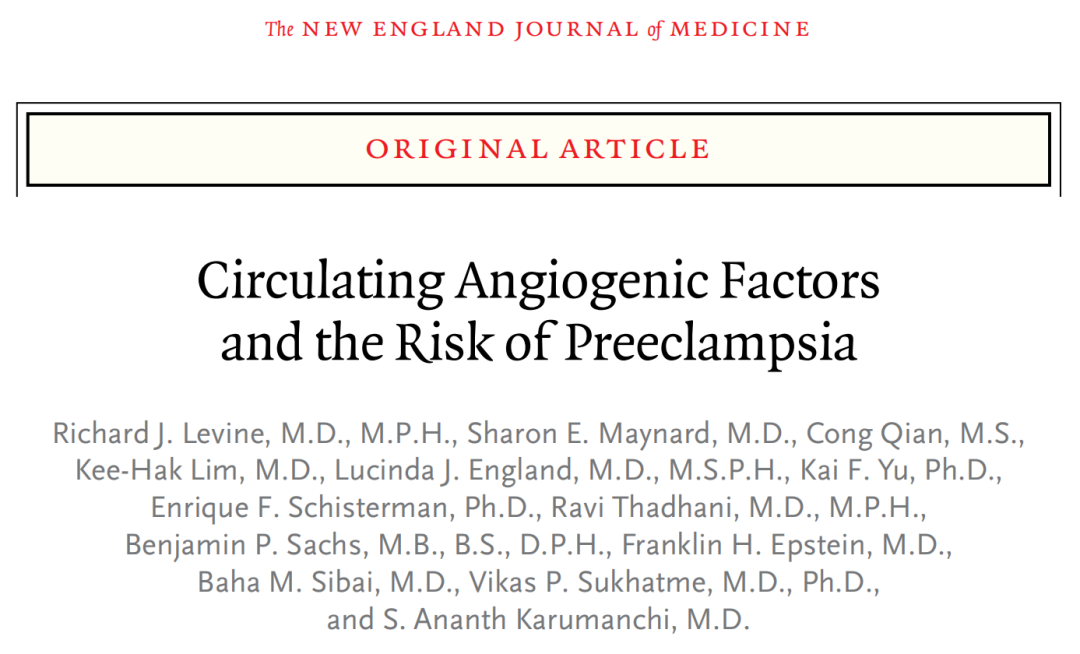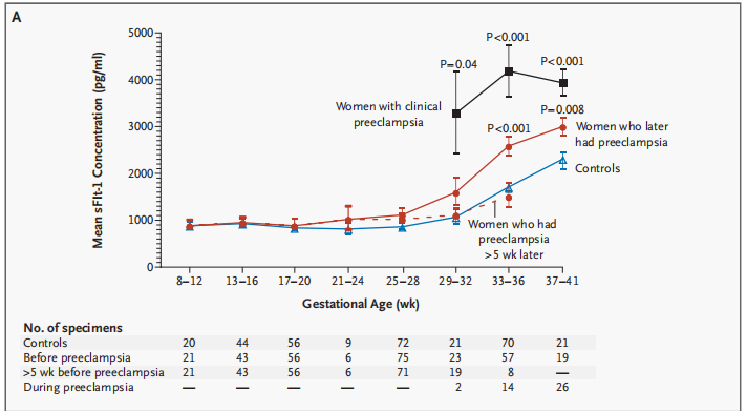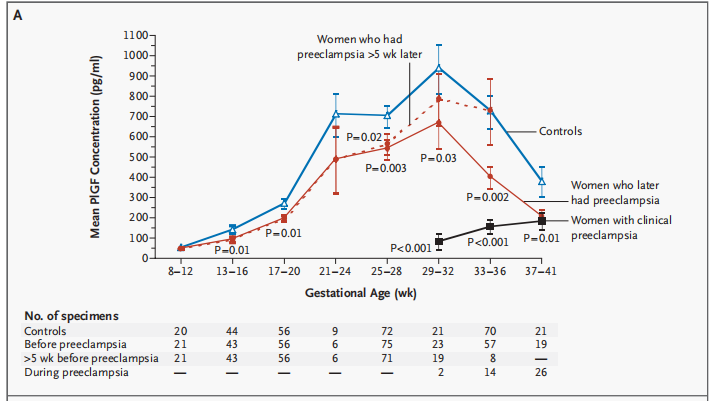标题:
- 周六直播|香港中文大学妇产科学系主任潘昭颐&刘素玲教授:第一孕期超声筛查及预防先兆子痫手操工作坊 2024-04-11
- 2024.4.12-13香港中文大学产科实操工作坊通知——第一孕期超声筛查及预防先兆子痫手操工作坊 2024-03-25
- 闪耀山城,奥丞生物2024CACLP圆满落幕! 2024-03-22
- 24年CACLP开幕日,奥丞专场直播,欢迎预约观看! 2024-03-15
- 第一届浙江省妊娠期高血压与子痫前期筛查防控中心湖州市分中心揭牌成立 2024-03-12


#1
sFlt-1是什么?
可溶性fms样酪氨酸激酶1(sFlt-1),是一种循环的抗血管生成蛋白。sFlt-1由Flt-1(VEGFR-1)(血管内皮生长因子受体1)胞外域剪接而成,转录于内含子13处,且仅编码胞外结构域,是VEGFR-1进入母体血液循环的可溶性形式[2]。sFlt-1具有可分泌性,对PLGF保留高度亲和力[3]。
1996年,Kendall等[4]首次在人脐静脉内皮细胞的培养液中发现游离的Flt-1(sFlt-1),并发现sFlt-1与血管内皮生长因子(VEGF)具有很强的亲和力,能够形成稳定的复合物。

1998年,Clark等[5]通过对人类孕早期及足月期胎盘组织的切片,并通过原位杂交和Western Blot和免疫组化等试验,首次在人类胎盘组织中(绒毛外滋养层细胞和绒毛中)发现sFlt-1。

#2
PLGF与sFlt-1的关系?
sFlt-1通过附着胎盘生长因子(PLGF)和血管内皮生长因子(VEGF)的受体结合域来发挥作用,阻止它们与内皮受体的相互作用,从而诱导内皮功能障碍[1]。PLGF与VEGF有高度同源性,PLGF在滋养细胞增殖和植入过程中起增强作用,sFlt-1则与VEGFR-1产生竞争性抑制作用,从而降低PLGF的活性[3]。
#3
PLGF、sFlt-1与子痫前期?
滋养细胞侵袭不足,子宫螺旋动脉血管重铸障碍,导致胎盘血流灌注不足,是子痫前期发病的关键。螺旋动脉重建损伤,胎盘灌注减少,导致胎盘缺血和sFlt-1释放。sFlt-1与游离的PLGF和VEGF相结合,从而导致内皮功能障碍。内皮细胞的生理功能障碍触发了内皮素-1(ET-1)的产生,从而进一步诱导高血压和蛋白尿,并抑制肾素的释放,促使高血压和PE的发生[2]。
Levine等[1]开展了一项随机、双盲的临床试验。4598名孕妇招募入组。实验组:120例子痫前期孕妇;对照组:120例正常孕妇。在连续几个不同的孕周,均测定sFlt-1,PLGF。

研究结果表明:
1)后期发生PE的孕妇,其sFlt-1比正常孕妇显著升高;
2)sFlt-1在PE发生前5周内显著升高;

3)后期发生PE的孕妇,自13-16周开始其PLGF比正常孕妇显著降低;
4)PLGF降低比高血压蛋白尿早9-11周。

PLGF、sFlt-1在母体内特殊的浓度水平变化,对孕中晚期疑似子痫前期孕妇发生子痫前期都具有预测价值(sFlt-1在妊娠20周前表达水平无变化,对于孕早期子痫前期预测无意义)。
#4
PLGF、sFlt-1预测子痫前期价值比较
医学价值比较
综上,
1)孕早期使用联合母体风险因素、MAP、PLGF、UTPI的子痫前期风险预测模型预测PE最佳;
2)孕中晚期,PLGF检测和sFlt-1/PLGF短期PE风险预测价值相当。有研究表明,PLGF重复动态监测预测早产的准确性和敏感性高,可能提高风险分层管理水平。
经济价值比较
1、孕早期子痫前期风险预测模型的使用可节省国家医疗开支
在加拿大开展的一项研究表明,孕早期子痫前期筛查出的高风险孕妇服用小剂量阿司匹林预防,预估每年可节约约1.4千万加元[6]。
加拿大一年分娩量约38.7万(2015年),而中国一年分娩量约1523万(2018年),约为加拿大的40倍。开展孕早期风险评估项目每年约节省28亿的医疗经济支出。
2、孕中晚期使用PLGF检测或sFlt-1/PLGF比值检测卫生经济学对比

无论是PLGF检测还是sFlt-1/PLGF比值检测,相较于常规检测而言,治疗费用都有所节省。PLGF检测比sFlt-1/PLGF比值检测最高可节省2.1倍的诊疗费用。
下期,我们将聊一聊PLGF如何促进血管生成。
参考文献:

© 2021 宁波奥丞生物科技有限公司 | 浙ICP备17032133号-2 | 网站建设:中企动力 宁波